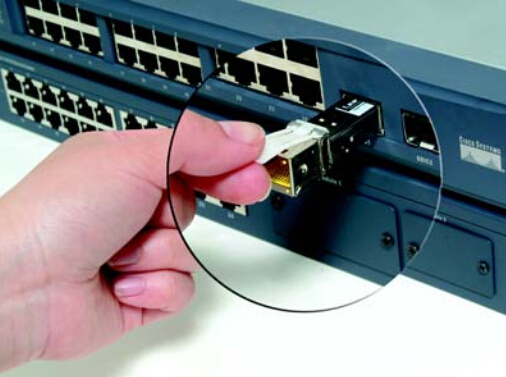-
As the introduction of multimode optical fibers of the categories OM3 and OM4 are used for implementing 40 GbE and 100 GbE, though the small diameter of the optical fibers poses no problems in laying the lines, the ports suddenly have to accommodate four or even ten times the number of connectors. This large number of connectors can no longer be covered with conventional individual connectors. Thus, some vendors such Fiberstore start to provide the incorporated optical connectors with very low loss for high port density. This article talks about MPO connectors and its high performance connector –MPT connector.
MPO ConnectorThe MPO connector is short for multi-fiber push on. It’s defined according to IEC 61754-7 and TIA/EIA 604-5 that can accommodate up to 72 fibers in the tiniest of spaces, comparable to an RJ45 connector. MPO connectors are most commonly used for 12 fibers (Figure 1).
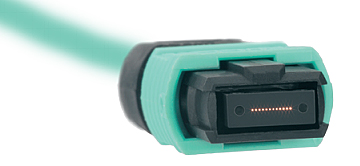 MPO Connector Benefits
MPO Connector BenefitsMPO connectors deliver the optical, mechanical and environmental performance that service providers need to expedite the addition of fiber capacity and to support higher data-rate services. Among the numerous operational, financial and competitive benefits of using MPO connectors in the core network are:
- Optical insertion loss and return loss performance similar to single-fiber connectors
- Maximum space savings for high-density fiber environments
- Reduced labor costs via fast, easy installation-- because one 12-fiber MPO connector replaces 12 single fiber connectors
- Compliant with standards, i.e., IEC 61754-7; IEC 61755-3-31, IEC 61753-1
However, the fibers are usually glued into holes within the ferrule body. Fibers glued directly into the body with MPO connectors make reworking later on difficult and put limits on manufacturing accuracy. And there will be some angle errors and radial displacement. So MTP connectors different from the MPO in various ways. e.g. rounded pins and oval shaped compression springs are created to prevent scratches during plug-in and protect the fibers in the transition area from connector to cable.
MTP connectorsThe MTP connector (Figure 2) is a high performance MPO connector with multiple engineered product enhancements to improve optical and mechanical performance. The MTP connectors are compliant with all MPO connector standards including IEC-61754-7.
 MTP Connector Benefits
MTP Connector BenefitsThe MTP connector has benefits that generic MPO connectors don’t have. And they are as follows:
1. The MTP connector housing is removable. So you can rework and re-polish the MT ferrule, change the gender after assembly and scan the ferrule interferometrically after assembly.
2. The MTP connector offers ferrule float to improve mechanical performance. This allows two mated ferrules to maintain physical contact while under an applied load.
3. The MTP connector uses tightly held tolerance stainless steel guide pin tips with an elliptical shape. The elliptical shaped guide pin tips improves guidance and reduces guide hole wear.
4. The MTP connector spring design maximizes ribbon clearance for twelve fiber and multi-fiber ribbon applications to prevent fiber damage.
5. The MTP connector is offered with four standard variations of strain relief boots to meet a wide array of applications.MPO/MTP connectors play an important role in the multi-fiber connection system. The connectors ensure fiber alignment when mating and realize high density interconnection. MPO/MTP connectors save time and reduce the risk of damaging fragile optical connectors.
 votre commentaire
votre commentaire
-
Many customers tend to use third-party compatible Cisco SFP transceivers to save costs on these expensive modules. But there maybe a problem that the Cisco’s new line switches do not support third-party SFPs. When inserting an SFP transceiver into Cisco switches to connect network backbone, you will find it doesn’t match an official Cisco product. Then you will stumble across the following error:
%PHY-4-UNSUPPORTED_TRANSCEIVER: Unsupported transceiver found in Gi1/0/0
%GBIC_SECURITY_CRYPT-4-VN_DATA_CRC_ERROR: GBIC in port 65538 has bad crcThe Catalyst switch disables the GBIC port. That’s because Cisco Catalyst switches are configured by default not to work with non-Cisco SFPs. When a third-party SFP inserted into the port, the switch immediately recognize it doesn’t match. And it will throw the above error message and disables the port.
Except the error, Cisco tends to be very strict about the warranty requirements for the third-party components including SFP transceivers. The details are as following: When Cisco determines that a fault or defect can be traced to the use of third-party transceivers installed by a customer or reseller, then, at Cisco's discretion, Cisco may withhold support under warranty or a Cisco support program. In the course of providing support for a Cisco networking product Cisco may require that the end user install Cisco transceivers if Cisco determines that removing third-party parts will assist Cisco in diagnosing the cause of a support issue.
That means if you use a third-party transceiver and it causes actual damage. Cisco may refuse warranty support. If the transceiver is merely suspected of being at fault, they may refuse support until you install a supported Cisco-branded transceiver.
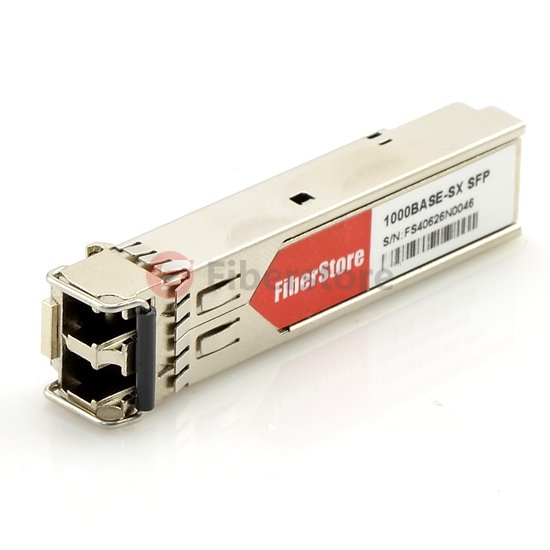
Now you may ask “Are the third-party compatible transceivers safe?”. The answer is yes. Most third-party transceivers are made and assembled in exactly the same plants assembling officially-branded transceivers. In a matter of speaking, an official Cisco transceiver and a third-party transceiver are the same, aside from the branding. In fact, the transceivers don’t have any real way of failing that would also damage a switch. So there is no problem to use third-party compatible transceiver.
Compatible SFP transceiver modules offered by Fiberstore are third-party and fully compatible with major brands (Cisco, HP, NETGEAR, Finisar, Juniper, etc.) and backed by a Lifetime Warranty. Fiberstore have a large selection of compatible SFP modules in stock and can ship within 24 hours.
 2 commentaires
2 commentaires
-
Fiber optic patch cable is also known as fiber optic jumper or fiber optic patch cord. There are many different kinds of fiber patch cords in the market such as LC to SC patch cable, SC to LC fiber patch cable, FC to SC fiber patch cable and some others either in single-mode or multimode applications. How do these categories come? Because fiber optic patch cord is composed of a fiber optic cable terminated with different connectors on the ends. The two factors are the classification criteria. The following will talk about the connector.
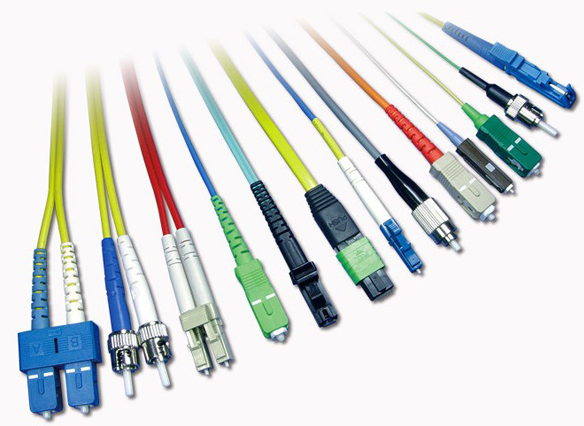
An optical fiber connector is used to join optical fibers and enables quicker connection and disconnection than splicing. Fiber connector is composed by three major things: the ferrule, the connector body and the coupling mechanism.
- Ferrule It’s a thin structure (often cylindrical) that actually holds the glass fiber. It has a hollowed-out center that forms a tight grip on the fiber. Ferrules are often made from ceramic, metal, or high-quality plastic, and typically will hold one strand of fiber.
- Connector Body It’s a plastic or metal structure that holds the ferrule and attaches to the jacket and strengthens members of the fiber cable itself.
- Coupling Mechanism This is a part of the connector body that holds the connector in place when it gets attached to another device (a switch, NIC, bulkhead coupler, etc.). It may be a latch clip, a bayonet-style nut, or similar device.
Good optical fiber connectors should contain these features below:
- Low insertion loss
- High return loss
- Ease of installation
- Low cost
- Reliability
- Low environmental sensitivity
- Ease of use
Optical fiber connectors are unique. Fiber cables transmit pulses of light instead of electrical signals, so optical fiber connectors should align microscopic glass fibers perfectly to allow for the signal transmission. Besides, most connectors are spring-loaded. It makes the fiber faces pressed together when the connectors are mated. The resulting glass-to-glass or plastic-to-plastic contact eliminates signal losses that would be caused by an air gap between the joined fibers.
A variety of optical fiber connectors are available including ST, SC, LC, FC, FC/APC, LC/APC, SC/APC, MT-RJ, E-2000-UPC, E-2000-APC and SMA style, but SC and LC connectors are the most common types of connectors in the market. The main differences among types of connectors are dimensions and methods of mechanical coupling. Different connectors are available for multimode, and for single-mode fibers, such as multimode SC patch cable fiber, single-mode FC patch cable fiber. They are applied in telecommunication, computer networks, CATV networks, active device termination, instrumentation, etc.
 votre commentaire
votre commentaire
-
With the increasing deployment of fiber in the LAN and WAN, especially for building and campus backbone installations, the small form factor (SFF) fiber-optic connector is more and more popular. One kind of transceivers called SFP is a small form-factor pluggable transceiver. It’s used for both telecommunication and data communication applications. The form factor and electrical interface are specified by a multi-source agreement (MSA). SFP transceivers are designed to support SONET, gigabit Ethernet, Fibre Channel, and other communications standards.
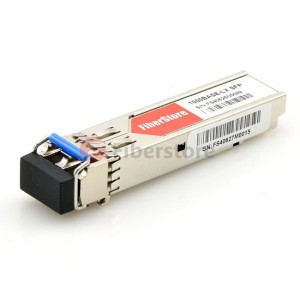
SFP is a cost effective way to connect a single network device to a wide variety of fiber cable distances and types. Network upgrades are made easier because SFP is interchangeable fiber connectors that can adapt to any existing network. SFP provides the network flexibility with high speed. As SFP has so many benefits, it is a popular industry format jointly developed and supported by many network component vendors. Users will find it difficult to choose a suitable SFP transceiver. What factors should users consider when buy a SFP?
Optical Fiber TypesSFP transceivers are available with a variety of different transmitter and receiver types. So users could select the appropriate transceiver for each link to provide the required optical reach over the available optical fiber type such as multi-mode fiber and single-mode fiber. The difference of the two kinds comes from the distance limitations encountered with the various types of optical transmission. Multi-mode is for short range up to 550 meters and single-mode fiber is for long range up to 10 kilometers. SFP transceiver is also available with a "copper" cable interface, allowing a host device designed primarily for optical fiber communications to communicate over unshielded twisted pair networking cable.
ConnectorsFiber cables consist of the cable and connectors. So users should also consider connectors when buy the transceiver. There are multiple choices for connector type. The main differences among types of connectors are dimensions and methods of mechanical coupling. Multi-mode fibers and single-mode fibers require different connectors. SC and LC connectors are by far the most common types of connectors on the market.
Equipment CompatibilityThe transceiver supposed to work in what switch/router should be considered. You should ask if the equipment "open for 3rd party transceivers" or "vendor locked". In order to be accepted by the equipment, the transceiver has to be coded. Therefore switch/router brand and model & firmware version must be known.
The suitable transceiver is determined by optical fiber type, the connector, the equipment compatibility, the wavelength, the protocol, the temperature and some other factors. Based on these factors, you will choose a suitable SFP transceiver. Fiberstore manufactures and supplies a complete range of SFP transceiver modules which can be customized. In addition, we also provide Compatible SFP transceivers as alternatives to those branded by Cisco, HP, Juniper etc. All of our SFP transceiver modules come with a lifetime advance replacement warranty and are 100% functionally tested.
 votre commentaire
votre commentaire
-
SFP is short for small form-factor pluggable. It’s a compact, hot-pluggable transceiver used for telecommunication and data communications. The form factor and electrical interface are specified by a multi-source agreement (MSA). It interfaces a network device motherboard (for a switch, router, media converter or similar device) to a fiber optic or copper networking cable. SFP transceivers can support SONET, Gigabit Ethernet, Fibre Channel, and other communications standards. SFP transceivers are upgraded from the traditional version with more flexibility but a smaller size.
Sometimes you may encounter the affairs like the installation and removing of a SFP transceiver. The following will tell you how to install and remove a SFP transceiver.
Install a SFP TransceiverThe following steps tell how to install a SFP transceiver:
- Attach an ESD-preventive wrist strap to your wrist and to the ESD ground connector or a bare metal surface on your chassis. SFP modules are static sensitive. Wear an ESD-preventive wrist strap so that it can prevent ESD damage.
- Remove the dust cap and save for future use.
- Ensure the SFP transceiver in the correct orientation for your device.
- Insert the SFP module into the socket. Be sure that the SFP module is in the right position before inserting.
- Observe the LED. If the LED turns green, it means the transceiver and the device establishes link successfully. While if the LED is off, there may be an installing problem with the adapter.
Remove a SFP TransceiverTo remove a SFP transceiver (see the picture), the following procedures you should bear in mind:
- Attach an ESD-preventive wrist strap to your wrist and to a bare metal surface on the chassis.
- Disconnect the network cable from the SFP transceiver.
- Remove the SFP transceiver carefully from the module slot.
- Place the removed the SFP module in a static shielding bag.
The above is about how the installation and removing of a SFP transceiver. One of the most famous brands Cisco SFP transceiver, which offers a convenient and cost effective solution in the adoptions of data center, campuses, metropolitan area, ring networks and storage networks is also suitable to these steps in applications.
At last, SFP transceivers are dust sensitive. So store the devices with plugs to avoid getting dust into the installed optical bores. And clean the optic surfaces of the fiber optical cables before the insertion. But you should better not insert or remove a SFP module until it’s necessary. Because it’s not good for keeping the useful life with repeated removals or insertions of a SFP transceiver.
 votre commentaire
votre commentaire Suivre le flux RSS des articles
Suivre le flux RSS des articles Suivre le flux RSS des commentaires
Suivre le flux RSS des commentaires
